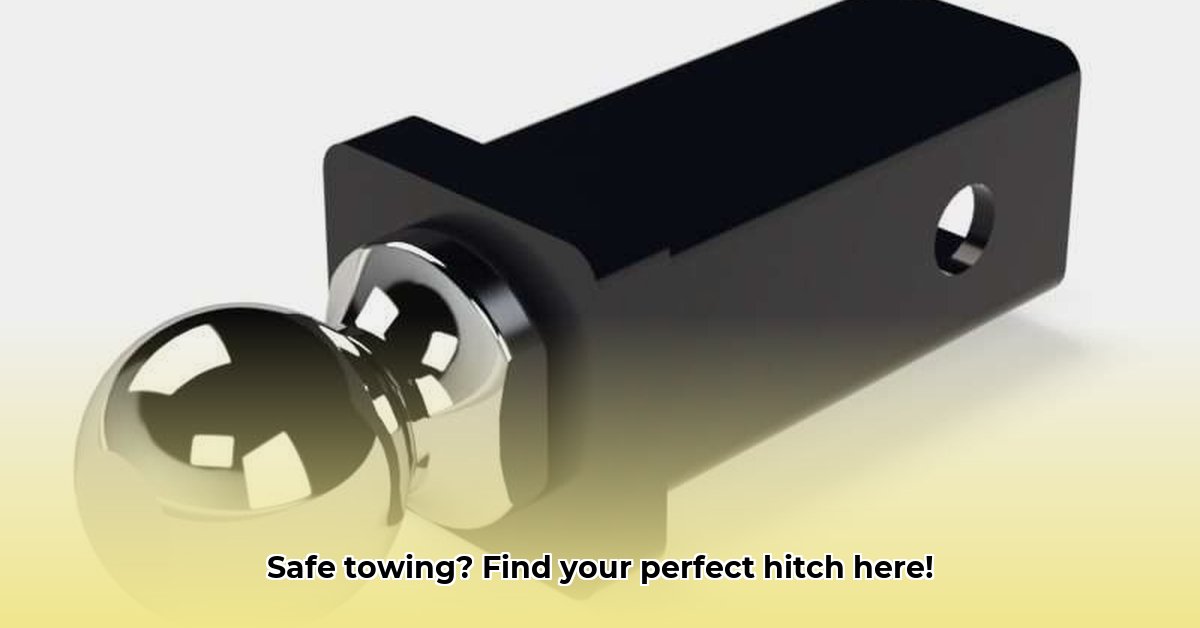
Thinking about towing a heavier load? A 2 5/16" ball hitch from Tractor Supply Company might be the solution. But choosing and installing the right hitch is crucial for safe towing. This guide will walk you through selecting, installing, and maintaining a 2 5/16" ball hitch, focusing on the Tractor Supply Co. option. We'll also compare it to other options and cover important safety considerations. For more information on Tractor Supply hitches, check out this helpful resource.
Understanding the 2 5/16" Ball Hitch: The Fundamentals
This hitch is designed for towing heavier trailers and loads. Its primary purpose is to connect your vehicle to a trailer, providing a robust connection capable of handling significant weight. However, remember that even the strongest hitch is limited by your vehicle's towing capacity – a vital specification found in your owner's manual. Never exceed your vehicle's maximum towing weight; doing so is incredibly dangerous.
Hitch Specifications & Compatibility: Ensuring a Proper Fit
Before purchasing, carefully check the specifications. The most crucial is the weight capacity – the maximum weight the hitch can safely support. Next, consider the hitch's dimensions to ensure compatibility with your vehicle's receiver hitch. A mismatch here is a recipe for disaster. Consult Tractor Supply's website, or speak with their staff, to confirm compatibility with your specific vehicle model. Improper fitment poses a critical safety risk.
Installing Your 2 5/16" Ball Hitch: A Step-by-Step Guide
Installing a hitch correctly is paramount for safety. Here's a step-by-step guide, but always refer to the manufacturer's instructions included with your specific hitch.
Preparation: Gather your tools: a wrench (suitable for the hitch pin), work gloves, and potentially a helper for heavier hitches. Ensure your vehicle is parked on a level, stable surface with the parking brake engaged. This prevents accidental movement during installation.
Cleaning: Thoroughly clean the receiver hitch on your vehicle removing dirt, debris, and rust to ensure a snug and secure fit. A clean connection is crucial for safety.
Insertion: Carefully slide the 2 5/16" ball hitch into your vehicle's receiver hitch. It should slide in smoothly. Any resistance indicates a problem – stop and investigate.
Securing: Firmly tighten the hitch pin using the appropriate wrench. Ensure it's securely locked; a loose hitch is extremely dangerous. Double-check that the pin is properly seated and the hitch is fully engaged.
Final Inspection: After tightening, perform a thorough visual inspection. Gently shake the hitch; it should be completely stable and show no signs of movement. Addressing any looseness is crucial before towing.
Comparing to Competitors: Value and Features
Tractor Supply's hitches offer a generally good value. However, comparing them to other brands is advisable. Consider factors like price, durability, included features (some higher-end hitches have integrated safety chains), and customer reviews. Weigh your priorities – initial cost versus long-term durability and safety features.
Troubleshooting and Safety: Proactive Problem Solving
Addressing potential issues proactively is crucial for safe towing.
- Loose Connections: Re-check all bolts and tighten as needed. If the problem persists, the hitch may be damaged.
- Incorrect Installation: Review the installation steps. If uncertain, seek professional assistance.
- Safety Chains: Always utilize safety chains, crossing them underneath the trailer tongue to prevent detachment.
- Weight Limits: Strictly adhere to the hitch and vehicle's maximum weight capacities. Overloading is extremely dangerous.
Key Takeaways: Safe Towing Practices
- Correct Hitch Size: Choosing the correct ball size (2 5/16") is vital for safety and proper connection.
- Proper Installation: Ensure correct and secure installation for reliable performance.
- Weight Limits: Never exceed the hitch's or vehicle's weight capacity.
- Regular Inspection: Periodically inspect your hitch for wear and tear.
- Safety First: Prioritize safe towing practices for your protection and the safety of others on the road. Remember, proper equipment and safe habits are essential for successful and secure towing.